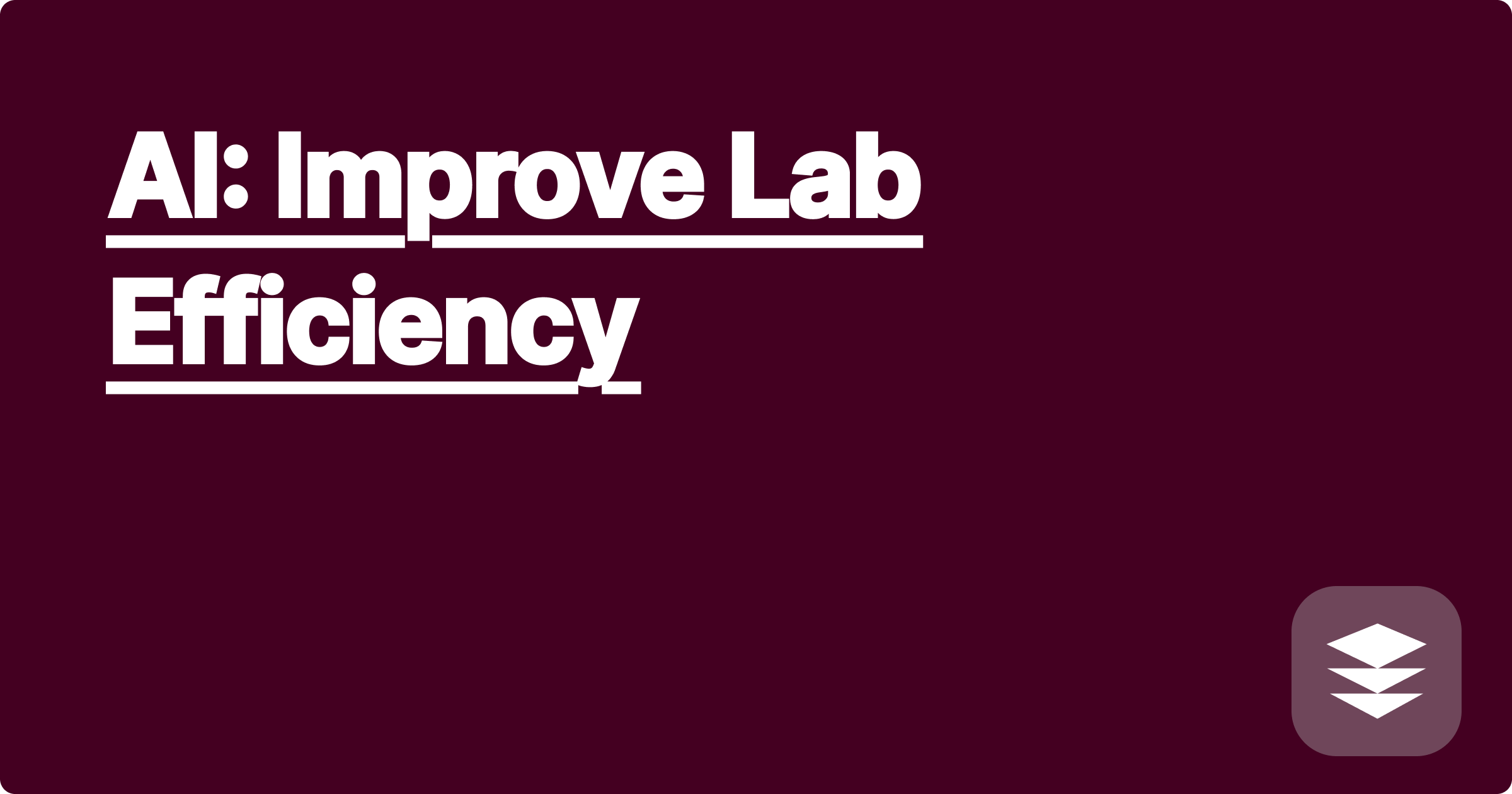
STEM fields are constantly pushing the boundaries of knowledge, but the process can be painstakingly slow. Researchers and students often grapple with time-consuming tasks, from data analysis and literature reviews to experimental design and report writing. Artificial intelligence (AI) offers a powerful set of tools that can dramatically enhance lab efficiency, accelerating the pace of discovery and freeing up valuable time for more creative and impactful work. This emerging technology has the potential to revolutionize how we approach research, offering a new paradigm of efficiency and productivity.
For STEM students and researchers, embracing AI isn't just about staying ahead of the curve; it's about unlocking new possibilities. By automating repetitive tasks and augmenting human capabilities, AI can empower researchers to tackle more complex problems, analyze larger datasets, and generate novel insights. This shift towards AI-driven research has significant implications for academic success, offering a competitive edge in a rapidly evolving landscape. Mastering these tools can lead to faster publication cycles, more impactful research outcomes, and a deeper understanding of complex scientific phenomena.
Laboratory work in STEM fields often involves a multitude of complex and time-consuming processes. Researchers and students spend significant time on tasks like literature reviews, searching for relevant papers amidst a vast and ever-growing body of scientific literature. Data analysis can also be a major bottleneck, requiring intricate statistical modeling and interpretation. Designing experiments, optimizing parameters, and troubleshooting unexpected results often involve a trial-and-error approach, consuming valuable time and resources. Finally, the process of writing reports, grant proposals, and publications can be tedious, demanding meticulous attention to detail and clear communication of complex scientific concepts. These challenges can hinder progress and limit the scope of research, creating a need for more efficient and streamlined workflows.
AI tools offer a powerful suite of capabilities to address these challenges. Large language models like ChatGPT and Claude can be leveraged for tasks such as summarizing research papers, generating initial drafts of reports, and brainstorming research ideas. They can also assist with coding, providing suggestions for optimizing scripts and debugging errors. Wolfram Alpha excels in complex calculations, symbolic manipulations, and data analysis, offering a powerful platform for exploring mathematical models and interpreting experimental results. By integrating these tools into existing workflows, researchers can automate repetitive tasks, gain deeper insights from their data, and accelerate the overall research process.
Begin by identifying the specific tasks in your workflow that are most time-consuming or prone to errors. These could include literature reviews, data analysis, experimental design, or report writing. Next, explore different AI tools to determine which ones are best suited for your needs. For instance, if you're struggling with literature reviews, ChatGPT or Claude can help you quickly summarize key findings from a large number of papers. If data analysis is your bottleneck, Wolfram Alpha can provide powerful computational and analytical capabilities. Once you've selected the appropriate tools, start by experimenting with them on smaller, well-defined tasks. This will allow you to familiarize yourself with their functionalities and limitations. As you gain more experience, you can gradually integrate these tools into more complex aspects of your workflow.
Consider a researcher studying the kinetics of a chemical reaction. They can use Wolfram Alpha to quickly calculate rate constants, equilibrium constants, and other relevant parameters based on experimental data. For example, if the rate equation is given by d[A]/dt = -k[A]^2, Wolfram Alpha can be used to solve this differential equation and determine the concentration of reactant A as a function of time. Furthermore, AI tools can be used to analyze large datasets generated from high-throughput experiments. Suppose a researcher is analyzing gene expression data from a microarray experiment. They can use AI tools to identify patterns in the data, cluster genes with similar expression profiles, and predict potential regulatory interactions. For instance, a code snippet in Python using a library like scikit-learn could be used to perform principal component analysis (PCA) on the gene expression data, revealing underlying patterns and reducing the dimensionality of the data.
To effectively leverage AI in STEM education and research, it's crucial to develop a strong understanding of the underlying principles and limitations of these tools. Don't treat AI as a black box; understand how the algorithms work and what their strengths and weaknesses are. This will allow you to critically evaluate the output of AI tools and ensure the accuracy and reliability of your results. Furthermore, it's important to develop strong data management skills. AI tools are most effective when they are fed with high-quality, well-organized data. Therefore, invest time in learning best practices for data collection, cleaning, and preprocessing. Finally, embrace a mindset of continuous learning. The field of AI is constantly evolving, with new tools and techniques emerging at a rapid pace. Stay updated on the latest advancements and be willing to experiment with new approaches.
To conclude, integrating AI into STEM workflows offers a transformative opportunity to enhance lab efficiency and accelerate the pace of discovery. By strategically implementing these powerful tools and developing a strong understanding of their capabilities, researchers and students can unlock new levels of productivity and innovation. Start by exploring the various AI tools available, identify the tasks in your workflow that can benefit from automation, and experiment with different approaches. Embracing AI is not just about adopting new technology; it's about fundamentally changing how we approach scientific inquiry and paving the way for a more efficient and impactful future in STEM.
AI for Chemistry: Ace Your Tests
AI Statistics Helper: Data Mastery
AI for CAD: Design Optimization
AI Essay Writer: STEM Research